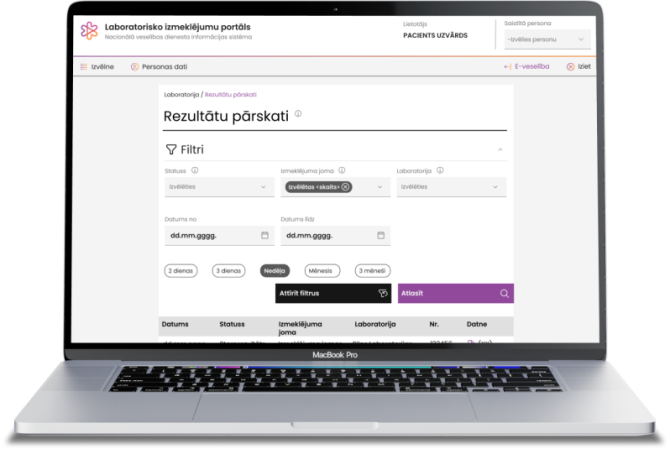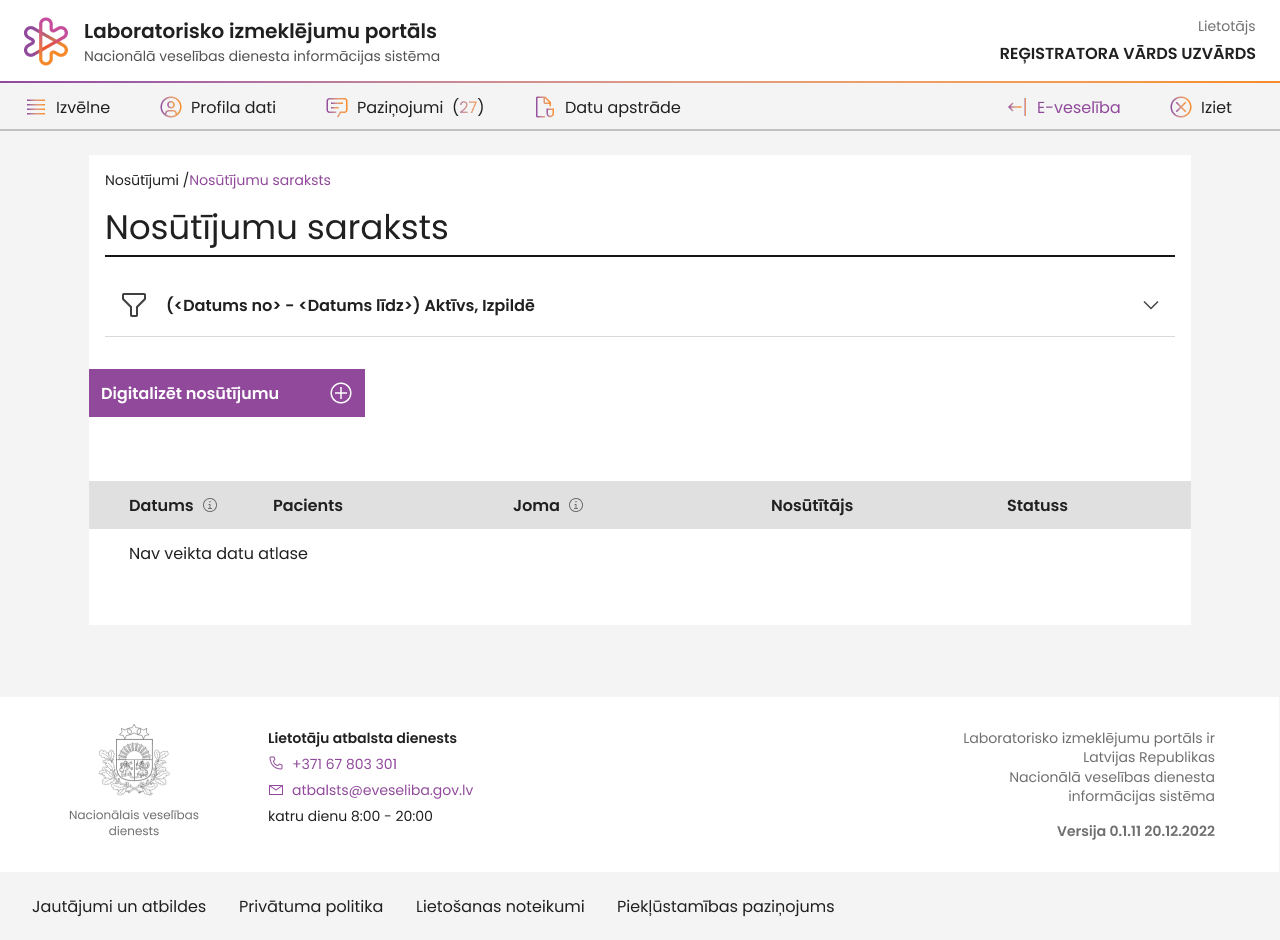
A multifunctional patient portal with PRMS (patient record management system) functionalities intended for nationwide use to facilitate HCP workflows and ensure convenience for patients and caregivers. Apart from providing updated information about clinical laboratory data and anamneses in chronological order, the portal displays prescriptions and other events that shape the course of treatment.

.NET 6

React.js

TypeScript

Docker

RabbitMQ

Redis

PostgreSQL

mongoDB
The project was implemented in a threefold collaboration between the Latvian state, the primary contractor, and Lionwood, who implemented much of the functionality. The Baltic countries are known for being in the forefront of digitalization when it comes to everyday activities outside of the now-traditional consumption economics, be it governmental paperwork or medical record keeping. In practice, this means the standards are always high in terms of UX, performance, and security, as well as regulatory compliance.

Since a large amount of patients are having their clinical analyses done in different medical institutions, some of them being part of the state-led system, and some private, there was a need for a single source of truth, a system that would aggregate the data generated throughout the patient journey into a unified register. This would facilitate the paperwork for both HCPs, patients, caregivers, and insurance companies, and provide for better outcomes now that the verified data would be available within a single system. At the same time, as the system would be dealing with sensitive personal data, compliance (especially with HL7, as well as other EU regulations) was paramount.

Create a robust web-based system with a patient/HCP-facing portal to aggregate, display, and allow to add, data to the patient records based on verified procedures
Ensure regulatory compliance (HL7, etc.)
Allow data from multiple heterogeneous sources to be verified and accumulated within a system that operates under a unified standard
Provide the adequate UX for each user role within the system to facilitate processes as compared to paper-based routines
Make the system scalable for nationwide adoption and ensure its applicability for multiple user scenarios, from doctor’s appointments to prescription handling
Implement additional functionalities that pertain to the use of pharmaceuticals (adherence, etc.)

Based on the requirements, Lionwood implemented a robust multifunctional portal with PRMS functionalities that can be (and now is) scaled to wide demographics and user groups. The system allows to view, procure, and update clinical analysis data, diagnostic documentation, as well as prescriptions, making processes easier in full alignment with the traditional mandated documentation, without forcing the users to double up their effort in recording the therapeutic proceedings.

